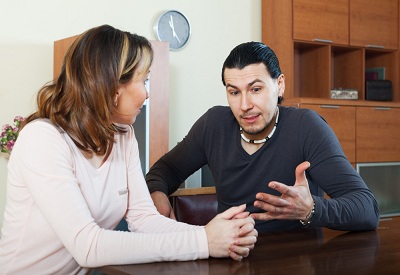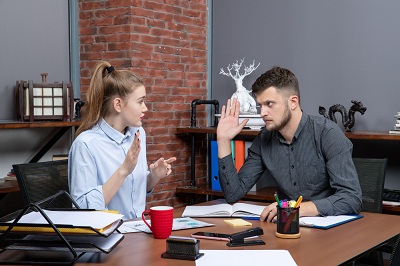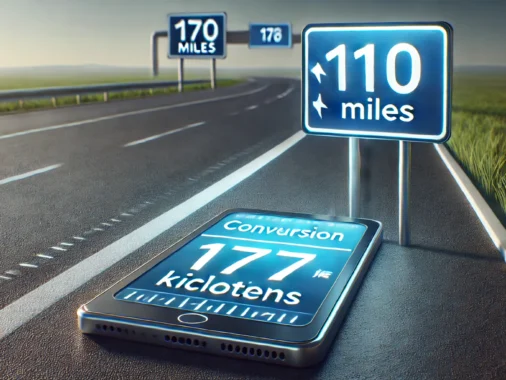Communication is much more than words. While verbal language conveys explicit messages, nonverbal cues—such as body language, facial expressions, and gestures—play an equally crucial role in shaping conversations. In fact, research suggests that over 70% of human communication is nonverbal, meaning that what you say is often less impactful than how you say it.
Body language helps us express emotions, establish connections, and reinforce or contradict our spoken words. Understanding these subtle cues can significantly improve communication, whether in personal relationships, workplace settings, or social interactions. In this article, we’ll explore the significance of body language, the meaning behind different gestures, and how to master nonverbal communication for more effective conversations.
1. Why Is Body Language Important in Conversations?
Body language is the silent force behind communication. It serves multiple purposes:
- Enhances or Contradicts Verbal Messages – If someone says, “I’m fine,” but their crossed arms, tense shoulders, and lack of eye contact suggest discomfort, their body language reveals their true emotions.
- Builds Trust and Connection – Open, positive body language fosters a sense of warmth and reliability, while closed-off gestures can create distance.
- Influences First Impressions – Studies show that people form opinions about others within seconds of meeting them, often based on nonverbal cues like posture, facial expressions, and eye contact.
- Conveys Confidence and Authority – A strong stance, upright posture, and steady eye contact can make someone appear more confident and persuasive.
- Bridges Language Barriers – When verbal language is limited, body language becomes an essential tool for expressing emotions and intentions.
Now that we understand its importance, let’s break down different aspects of body language and what they reveal in conversations.
2. Facial Expressions: The Window to Emotion
The human face is one of the most expressive parts of the body, capable of conveying emotions like happiness, sadness, anger, surprise, and fear.
Common Facial Expressions and Their Meanings:
- Smiling – A genuine smile (one that reaches the eyes) signals friendliness, warmth, and approachability. A fake smile, on the other hand, may indicate discomfort or forced politeness.
- Raised Eyebrows – Raised eyebrows can express surprise, curiosity, or skepticism, depending on the context.
- Furrowed Brows – A furrowed forehead often indicates concentration, confusion, or concern.
- Lip Biting or Pursing – This can signal nervousness, hesitation, or anxiety.
- Nodding – A nod is a universal sign of agreement and encouragement, but excessive nodding may indicate an attempt to please rather than genuine understanding.
Facial expressions are powerful because they occur naturally and instinctively. By being aware of both your own expressions and those of others, you can enhance understanding and emotional intelligence in conversations.
3. Eye Contact: The Silent Connector
Eye contact is one of the most telling aspects of body language. It conveys confidence, interest, and sincerity, but it can also signal discomfort or deception if misused.
What Different Types of Eye Contact Mean:
- Steady Eye Contact – Shows attentiveness, confidence, and engagement in a conversation.
- Avoiding Eye Contact – Can indicate shyness, nervousness, or dishonesty. However, in some cultures, avoiding direct eye contact is a sign of respect.
- Excessive Staring – Might come across as aggressive, intimidating, or inappropriate.
- Glancing Away Repeatedly – Suggests distraction, disinterest, or an attempt to hide something.
Mastering eye contact requires balance—too little can make you seem disengaged, while too much can feel uncomfortable. Aim for consistent but natural eye contact to maintain effective communication.
4. Gestures: What Your Hands Say Without Words
Hand movements often emphasize or reinforce spoken words, but they can also reveal unspoken thoughts and emotions.
Common Hand Gestures and Their Meanings:
- Open Palms – Indicates honesty, openness, and sincerity. It signals that a person has nothing to hide.
- Pointing Finger – Can be perceived as aggressive or authoritative, depending on the tone and context.
- Hands on Hips – May suggest confidence and assertiveness, but in some cases, it can appear confrontational.
- Crossed Arms – A classic sign of defensiveness or resistance. However, it can also simply indicate comfort or a casual posture.
- Touching the Face – Often associated with nervousness, deception, or deep thought.
- Rubbing Hands Together – Can signal excitement, anticipation, or nervous energy.
Being mindful of your hand gestures can enhance the clarity of your message while helping you appear more engaging and confident.
5. Posture: The Silent Indicator of Confidence
The way you carry yourself speaks volumes before you even say a word. Your posture reflects your confidence level, mood, and attentiveness.
Types of Postures and Their Interpretations:
- Upright, Open Posture – Shows confidence, attentiveness, and willingness to engage.
- Slouched Posture – May indicate boredom, laziness, or lack of confidence.
- Leaning In – Suggests interest and engagement in the conversation.
- Leaning Away – Can indicate discomfort, disinterest, or disagreement.
- Standing with Feet Shoulder-Width Apart – A stance that conveys confidence and authority.
By maintaining good posture, you naturally appear more self-assured and receptive to others.
6. Proximity and Personal Space: Understanding Boundaries
Every person has an invisible “bubble” of personal space that varies based on cultural norms, relationships, and context.
Types of Personal Space:
- Intimate Space (0-18 inches): Reserved for close friends, family, and romantic partners.
- Personal Space (1.5 – 4 feet): Used in casual conversations with friends or colleagues.
- Social Space (4 – 12 feet): Common for formal interactions, business meetings, or group settings.
- Public Space (12+ feet): Maintained in public speaking or large gatherings.
Invading someone’s personal space without permission can make them feel uncomfortable, while maintaining the right distance fosters ease and connection.
7. Cultural Differences in Body Language
Body language is not universal—what is considered polite or respectful in one culture might be rude in another.
- In Japan and Korea, bowing is a sign of respect, while in Western cultures, a firm handshake is preferred.
- In the Middle East, prolonged eye contact may be seen as aggressive, while in Western countries, it signals confidence.
- In some parts of Asia, avoiding direct eye contact with elders is a sign of respect, whereas in Western cultures, it may be interpreted as dishonesty.
Being culturally aware prevents misunderstandings and ensures respectful communication.
8. How to Improve Your Body Language for Better Conversations
- Practice Self-Awareness: Pay attention to your own body language and how it aligns with your words.
- Observe Others: Notice nonverbal cues in conversations to better understand people’s emotions and responses.
- Mirror Positively: Subtly mirroring someone’s gestures and expressions can create rapport and connection.
- Stay Relaxed and Open: Avoid crossing arms, fidgeting, or slouching to appear more confident and engaged.
- Use Gestures Naturally: Let your hand movements complement your speech rather than distract from it.
Conclusion
Body language is a powerful aspect of communication that shapes how we connect with others. From facial expressions to posture and gestures, nonverbal cues can either reinforce or contradict spoken words. Understanding and mastering body language allows you to express confidence, build stronger relationships, and interpret others’ emotions more accurately.
By becoming more conscious of your own body language and recognizing signals from others, you can significantly improve the effectiveness of your conversations—whether in personal, professional, or social settings. In the end, what you say with your body can be just as important as what you say with your words.






